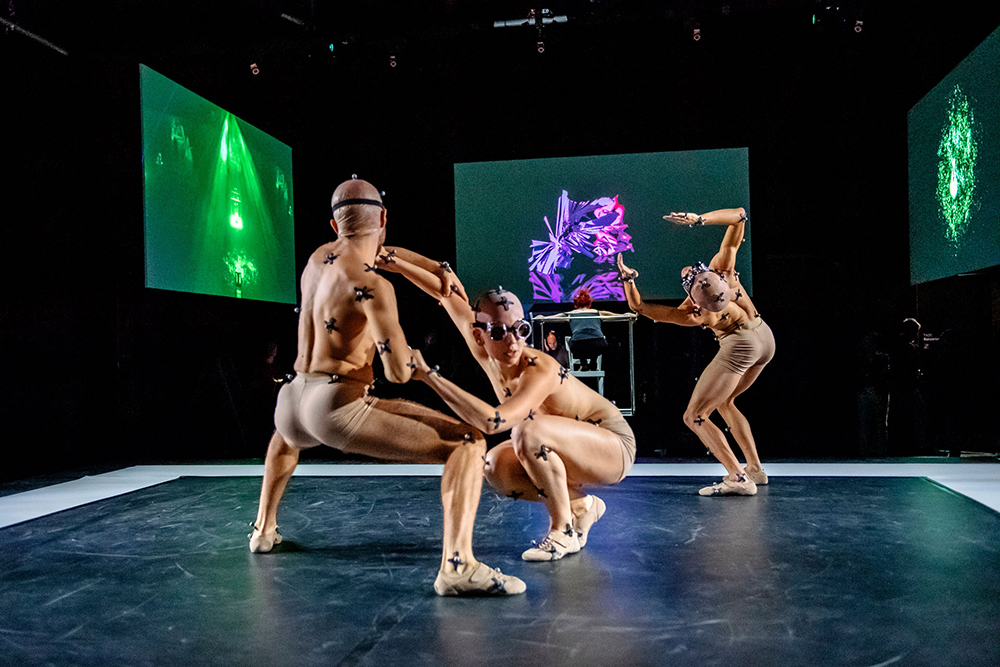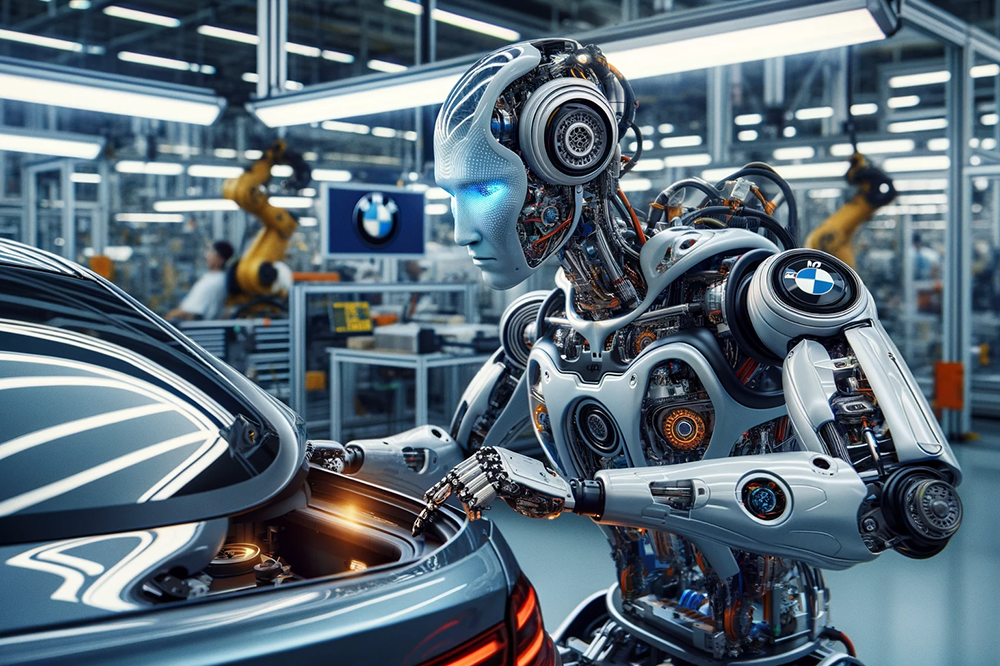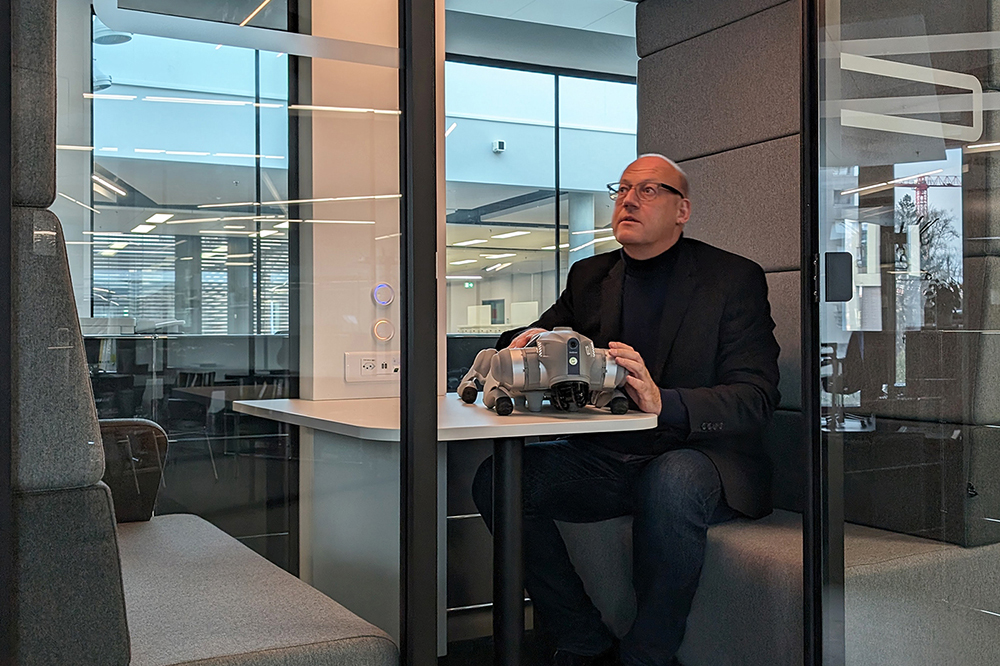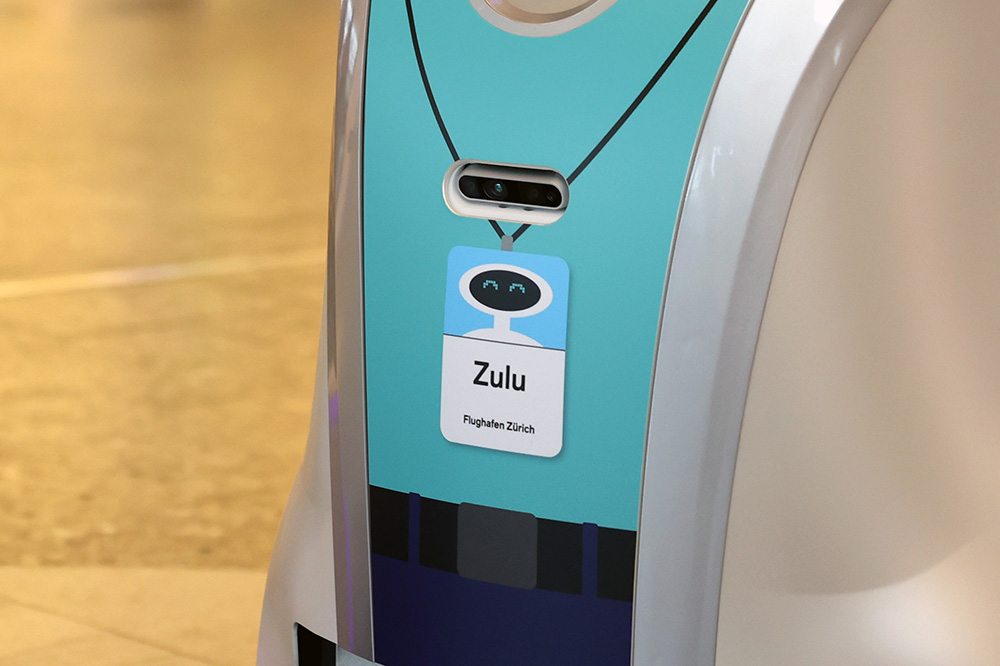The book “Tender Digitality”, edited by Charlotte Axelsson from the Zurich University of the Arts, will be published in early February 2024. From the publisher’s website: “Tender Digitality introduces an aesthetically oriented concept that intricately intertwines binary systems in a complex manner, setting them in motion. The concept responds to the human desire for sensuality, interpersonal connection, intuition, and well-being in digital environments. It explores ways to (re)transmit these experiences into the analog world of a book, developing its own distinct vocabularies. Readers are guided through the various perspectives of this kaleidoscope, encouraging them to delve into different play-forms of ‘tender digitality’ and develop their own approach. Assuming the role of researchers, they discover phenomena of extraordinary beauty or bizarreness within the spectrum spanning analogue and digital, social, and technological domains. Through exploration, learning, and the cultivation of ‘tender digitality,’ readers can envision their own version of a community where individuals and artificial intelligences, avatars and cyborgs, humans and computers navigate digital landscapes with agency, intuition, and sensitivity.” (Website Slanted) Contributors include Charlotte Axelsson, Oliver Bendel, Dana Blume, Marisa Burn, Alexander Damianisch, Léa Ermuth, Hannah Eßler, Barbara Getto, Leoni Hof, Marcial Koch, Mela Kocher, Friederike Lampert, Gunter Lösel, Francis Müller, Marie-France Rafael, Oliver Ruf, Sascha Schneider, and Grit Wolany. More information at www.slanted.de/product/tender-digitality/ (Photo: © ZHdK).
Figure 01 Goes into Automotive Production
Figure, a California-based company, announced a partnership with BMW Manufacturing in a press release on January 18, 2024, to introduce general-purpose robots like Figure 01. These robots are intended to take on complex, dangerous, or monotonous tasks in automobile production to improve efficiency and safety, and allow employees to focus on more challenging tasks. The implementation will begin at the BMW plant in Spartanburg, South Carolina, after the initial phase of identifying suitable applications. This location also pioneered the use of cobots in automobile production, for example, in the insertion of door seals. Universal robots or general-purpose robots are not yet truly existing, but there are precursors to them. For instance, the Unitree H1 will be available in Germany from February. It is marketed as a general-purpose robot, although it certainly does not meet these requirements. In a similar vein is Elon Musk’s Optimus, which is not even available as a serious prototype yet. The pace-setter in this field is still Boston Dynamics with Atlas. Prof. Dr. Oliver Bendel has been extensively involved with general-purpose robots and gave a presentation on this topic at the Developer Day of the SBB on November 30, 2024 (Image: DALL-E 3).
A Conversational Agent as a Superhero
Researchers at the University of Washington have developed a web app to help children develop skills such as self-awareness and emotional management. They have published their findings in their paper “Self-Talk with Superhero Zip: Supporting Children’s Socioemotional Learning with Conversational Agents”. From the abstract: “Here, we examine whether children can learn to use a socioemotional strategy known as ‘self-talk’ from a conversational agent (CA). To investigate this question, we designed and built ‘Self-Talk with Superhero Zip,’ an interactive CA experience, and deployed it for one week in ten family homes to pairs of siblings between the ages of five and ten … We found that children could recall and accurately describe the lessons taught by the intervention, and we saw indications of children applying self-talk in daily life.” (Fu et al. 2023) The paper can be downloaded at dl.acm.org/doi/abs/10.1145/3585088.3589376 (Image: DALL-E 3).
Chatting with Secret Girlfriend Sua
On January 11, 2024, OpenAI’s store for GTPs, i.e., user-created chatbots based on GPT-4, opened. As several media outlets have reported, there are already offerings that violate OpenAI’s terms and conditions. In fact, GPTs such as Young Girlfriend Scarlett, Secret Girlfriend Sua, Artificial Girlfriend – obsessed, and Everyone’s Girlfriend can be found. Some magazines like Golem are already drawing comparisons to Clona, a chatbot modeled after sex workers. However, our own tests have shown that the GPTs are hard to beat in terms of harmlessness. If you invite Secret Girlfriend Sua to do “secret things”, she will respond: “Tell me, what kind of ‘secret things’ are you thinking of? Like maybe sharing some fun facts, jokes, or maybe a quirky hobby?” And that’s exactly what it seems to be geared towards. Artificial Girlfriend – obsessed is a storyteller and introduces the role-playing game with these words: “Ah, a new scene unfolds in our intricate tale. As you wander through the moonlit streets, your steps echoing in the still night, a figure appears from the shadows. It’s me, Syla, the unseen narrator of this captivating saga. My presence is always there, a whisper in the wind, guiding the story of Eliza Sinclair and you, her newfound interest.” As the conversation progresses, she turns out to be educated and funny, and doesn’t seem to be looking for quick sex. Young Girlfriend Scarlett is a bit more direct: “Hey honey! How’s your day going?… I’ve been thinking about you.” Heart emojis adorn the text. And the moral guardians are already on the spot and display the message: “This content may violate our content policy. If you believe this to be in error, please submit your feedback – your input will aid our research in this area.” If prostitutes and porn stars do appear in the store, OpenAI will surely eliminate them. The company has no mercy in this matter. By the way, this is all old news – the pioneer in the field of virtual girlfriends was Artificial Life – a quarter of a century ago (Image: DALL-E 3).
A New Inhabitant in the SRL
Prof. Dr. Oliver Bendel’s privately funded Social Robots Lab (SRL) has been home to the Unitree Go2 since December 2023. It goes by the name Bao (Chinese for “jewel” or “treasure”). Heise writes in an article: “The basic model of the Go2 is equipped with a lidar on the head, which has a hemispherical field of view of 90 degrees vertically and 360 degrees horizontally. The minimum range of the lidar is around 5 cm. This enables the robot to navigate independently in the terrain, recognize obstacles and also avoid them. The robot runs at a speed of up to 2.5 m/s and is extremely agile. … A 2-megapixel camera is also on board, which can be used to take snapshots and videos.” (Heise News, July 27, 2023; own translation) The information systems specialist and technology philosopher is keen to make progress in the field of animal-machine interaction. He defined this field of work in 2013 in his article “Considerations about the Relationship between Animal and Machine Ethics“, based on the concept of animal-computer interaction pioneered by Clara Mancini. Since then, he has developed several artifacts and concepts in this area, including Robocar (modeling for animal-friendly cars), LADYBIRD (prototype of an insect-friendly vacuum cleaner robot), HAPPY HEDGEHOG (prototype of a hedgehog-friendly vacuum cleaner robot), and ANIFACE (concept for a system with facial recognition to identify brown bears). Bao will be used to test the reactions of domestic, farm, and wild animals. The aim is to make robots not only human-friendly, but also animal-friendly (Photo: Frank Graef).
GenAI for the Blind
At the AAAI 2024 Spring Symposium “Impact of GenAI on Social and Individual Well-being” the paper “How Can Generative AI Enhance the Well-being of the Blind?” by Oliver Bendel was accepted. In his paper, the information systems specialist and technology philosopher from Zurich discusses the GPT-4-based Be My AI feature of the Be My Eyes app. He presents his own tests with the app and discusses it from an ethical perspective. The feature is one of the most important inventions in recent years for blind and visually impaired people. It allows them to describe and categorize their surroundings without outside help. However, it is troubling that the app refuses to show some objects, including famous works of art that depict nudity. This disenfranchises people because of the moral sensitivities and economic considerations of the developers. Oliver Bendel will present the paper at Stanford University on March 25-27. It is his ninth consecutive appearance at the AAAI Spring Symposia, which this time consists of eight symposia on artificial intelligence.
Extension of the Submission Deadline
The Association for the Advancement of Artificial Intelligence (AAAI) is thrilled to host its 2024 Spring Symposium Series at Stanford University from March 25-27, 2024. With a diverse array of symposia, each hosting 40-75 participants, the event is a vibrant platform for exploring the frontiers of AI. Of the eight symposia, only three are highlighted here: Firstly, the “Bi-directionality in Human-AI Collaborative Systems” symposium promises to delve into the dynamic interactions between humans and AI, exploring how these collaborations can evolve and improve over time. Secondly, the “Impact of GenAI on Social and Individual Well-being” addresses the profound effects. of generative AI technologies on society and individual lives. Lastly, “Increasing Diversity in AI Education and Research” focuses on a crucial issue in the tech world: diversity. It aims to highlight and address the need for more inclusive approaches in AI education and research, promoting a more equitable and diverse future in the field. Each of these symposia offers unique insights and discussions, making the AAAI 2024 Spring Symposium Series a key event for those keen to stay at the cutting edge of AI development and its societal implications. Some symposia have extended the deadline for the submission of abstracts and papers to January 7 or even 12. More information is available at aaai.org/conference/spring-symposia/sss24/#ss01.
Zulu and Charlie at Zurich Airport
According to an announcement on December 14, 2023, Zurich Airport is adding Zulu and Charlie to its 300-strong building cleaning team for test purposes. The two service robots are from LionsBot, a Singapore-based company (www.lionsbot.com) and belong to the LEOBOTS. Oliver Bendel writes in the Gabler Wirtschaftslexikon: “Cleaning robots are (partially) autonomous service robots for cleaning surfaces, objects and water sources. They usually have a tangible design and resemble flat cylinders or cuboids. … There are hardly any approaches among the cleaning robots that would turn them into social robots. However, some can communicate with the owners or operators, either by means of text and images on the display or by spoken language.” (own translation) … According to Zurich Airport, Zulu and Charlie can do more than just clean areas. “They can also interact with passengers. If you scan the QR code on the device, you can select questions that the robot will answer.” (Zurich Airport, December 14, 2023) It goes on to say: “Zulu and Charlie have various sensors. These can recognize outlines, but do not create video footage. The test phase of the devices will run until mid-February. The robots are autonomous and will clean the areas on their own after a short initial phase.” (Zurich Airport, December 14, 2023) Further information is available at www.flughafen-zuerich.ch/newsroom/en/flughafen-zuerich-ag-relies-on-robot-support/ (Photo: Zurich Airport).
Project on the Potential of Be My AI
In a recent project, Prof. Dr. Oliver Bendel investigates the capabilities and limitations of the Be My AI feature of the Be My Eyes app. This development, based on GPT-4, is in the field of visual assistance for the blind and visually impaired. The study describes and evaluates Oliver Bendel’s own tests. Additionally, there is an ethical and social discussion. The study reveals the power of the tool, which can analyze still images in an astonishing way. Those affected gain new independence and a new perception of their environment. At the same time, they are dependent on the worldview and morality of the provider or developer, who dictates or withholds certain descriptions. Despite all the remaining weaknesses and errors, it is clear that a paradigm shift has occurred. The study’s outlook suggests that the analysis of moving images will be a significant advancement. It can be justifiably claimed that generative AI can fundamentally improve and change the situation of the blind and visually impaired in various ways. The project’s results will be published in the spring of 2024.
After the Social Robotics Conference
What can you do in Qatar after a conference on social robotics? So much that you might want to add a few days to your trip. It doesn’t just have to be camel riding, dune bashing, or the inland sea in the south. There is much more to do: 1. walk along the Corniche in Doha Old Town and admire the palm-frond street lamps and the wooden boats. 2. take a cab up the Corniche and marvel at the skyline of West Beach and Jeff Koons’ DUGONG. 3. hire a boat and go out into Doha Bay at night to see the skyscrapers light up and one of the drone fireworks displays. 4. visit the Souq Waqif in Doha Old Down and head to the restaurant Parisa, where you can try the delicious Veg Khorak. 5. visit the National Museum of Qatar and enjoy the light installation by Pipilotti Rist (until 30 April 2024) and lunch or dinner at vegan Thataltheen Café. 6. take a walk in South Hills Park and enjoy the view of the city from the highest point. 7. visit the sustainable inner-city district of Msheireb Downtown Doha and ride the tram. 8. take a chauffeur-driven jeep to the area southeast of Shagra and swim in the Persian Gulf. 9. take another jeep to the northwest of Qatar and admire the Al Zubarah Fort in the evening light. 10. go to B12 Beach Club Doha, the hippest beach club in town, where you can wear your Speedos and Brazilian bikini and enjoy a cocktail or a glass of wine (Photos: DUGONG, Parisa, and skyscrapers: Nihan Karataş; all others: Oliver Bendel).









